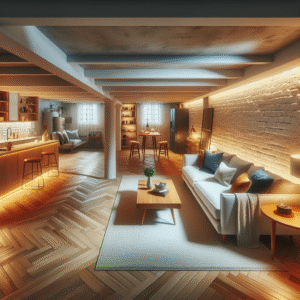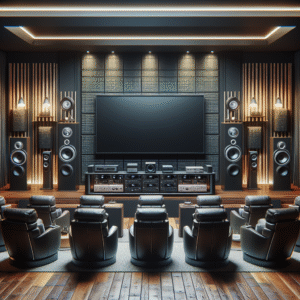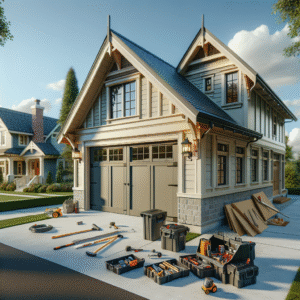Introduction to Central Vacuum Systems: What They Are and How They Work
Imagine a cleaning solution that not only enhances your home’s cleanliness but also improves indoor air quality while being whisper-quiet. That solution is a Central Vacuum System. Central vacuum systems, also known as built-in or ducted systems, are installed into a building to remove dirt, dust, and debris. These systems consist of a central power unit typically located in basements or garages, piping installed through interior walls, and inlet valves placed strategically around the home where a lightweight hose can be connected. When you plug the hose into an inlet, the dirt is carried away to the central unit, keeping your living space immaculate without lugging around a heavy appliance.
5 Key Benefits of Installing a Central Vacuum System in Your Home
- Improved Air Quality: Unlike traditional vacuums that can recirculate dust, a central vacuum system removes all the dirt and debris out of the living areas entirely, significantly reducing allergens.
- Convenience: Lightweight hoses and multiple outlets mean no heavy lifting and easy accessibility across the home.
- Less Noise: Since the motor of a central vacuum is located away from living areas, cleaning becomes a much quieter task.
- Increased Home Value: Central vacuum systems are a desirable feature that can increase the resale value of your home.
- Extended Lifespan: These systems are more durable and require less maintenance than standard vacuums.
How to Choose and Install the Right Central Vacuum System for Your Home
Choosing the right central vacuum system for your home involves considering several factors such as the size of your home, the system’s capacity, and the type of filtration it offers. Installation, while it can be a DIY project, is often best handled by professionals to ensure efficiency and safety. Consulting with local experts through platforms like BuildNet can provide tailored advice and professional installation services, making the process seamless and stress-free.
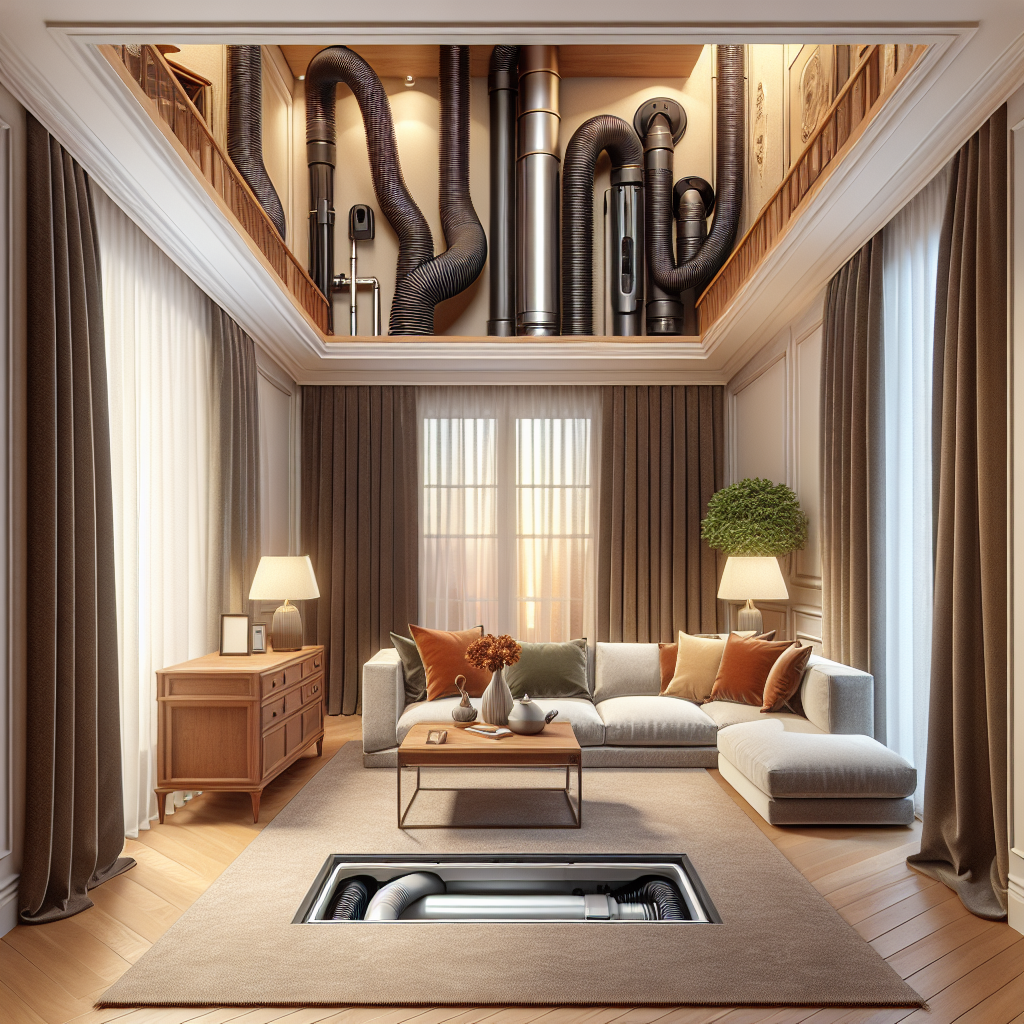
If you’re ready to take your home improvement or construction project to the next level, we can help! Find trusted contractors on BuildNet, whether you’re looking for renovations, new builds, electrical work, plumbing, or anything in between. Our directory connects you with qualified professionals who can make your vision a reality.
Introduction to Central Vacuum Systems: What They Are and How They Work
Hey there! If you’ve ever felt like your regular vacuum cleaner isn’t quite up to par with the endless bits of dirt and debris in your home, then you might be intrigued by the magic of a central vacuum system. Let’s dive into what these systems are and how they could be a game-changer in your cleaning routine.
Understanding Central Vacuum Systems
Imagine a vacuum that doesn’t require lugging around a heavy canister or untangling cords. That’s the central vacuum system for you – a semi-permanent fixture in your home that’s designed to make vacuuming less of a chore and more of a breeze.
Central vacuum systems consist of a motor and debris collection unit, typically located in the basement or garage, connected through in-wall piping to various inlets around your house. You simply attach a lightweight hose to an inlet, and voilà, you’re ready to suck up dirt and dust from every nook and cranny!
How Central Vacuum Systems Work
The central vacuum system operates on a pretty straightforward principle. It’s all about the power unit, the heart of the system, which does the heavy lifting of pulling the dirt through in-wall tubes that run throughout your home.
- Power Unit: Usually installed in an out-of-the-way spot like the garage, this unit includes the motor and the dirt canister or bag. It’s the powerhouse that creates suction and collects debris.
- In-wall Tubing: These are built-in ducts that connect the power unit to various parts of your house. They are installed within the walls and floors, creating a hidden highway for dirt traveling to the power unit.
- Vacuum Inlets: Installed strategically around your home, these are the points where you plug in the vacuum hose. Normally, there are enough inlets so that a single hose can reach every part of your home with ease.
- The Hose and Attachments: The hose is lightweight and designed to be easy to handle. Attachments can include everything from standard floor heads to tools for crevices, upholstery, and even pet hair.
The Behind-the-Scenes Magic
When you plug the hose into an inlet, a low-voltage circuit completes, signaling the power unit to kick into action. As you begin vacuuming, debris is whisked away from the floors, through the hose, into the tubing, and finally, it ends up in the canister at the power unit. This process not only ensures effective cleaning but also significantly reduces the noise you’d typically associate with vacuuming – since the main motor isn’t following you around the house.
Benefits of Being Bagless
Many modern central vacuum systems are designed to be bagless. Instead of bags, they use canisters which you can easily empty whenever needed. This is not only eco-friendly but also cost-effective, as you’re not constantly buying replacement bags.
Installation Insights
Thinking about getting a central vacuum system installed in your home? It’s a task best left to the professionals. The installation involves planning the layout of the piping, ensuring optimal placement of the inlets, and setting up the power unit. Professional installers can seamlessly integrate the system into a new construction or an existing home, making sure that the structural integrity and aesthetic appeal of your home are maintained.
Is It Right for You?
If you’re building a new home or looking for ways to upgrade your current residence, a central vacuum system could be a fantastic addition. It’s particularly beneficial for larger homes or for households where allergies are a concern, as these systems can significantly reduce the amount of dust recirculated in your living area.
There you have it! Central vacuum systems are all about convenience and efficiency, designed to make the chore of vacuuming easier and less intrusive. With a central vacuum, you can say goodbye to dragging around a bulky vacuum and hello to a quicker, more effective way to keep your home dust-free. Interested in exploring options for your home? Discuss it with a local professional to see how you can integrate this system into your home design!
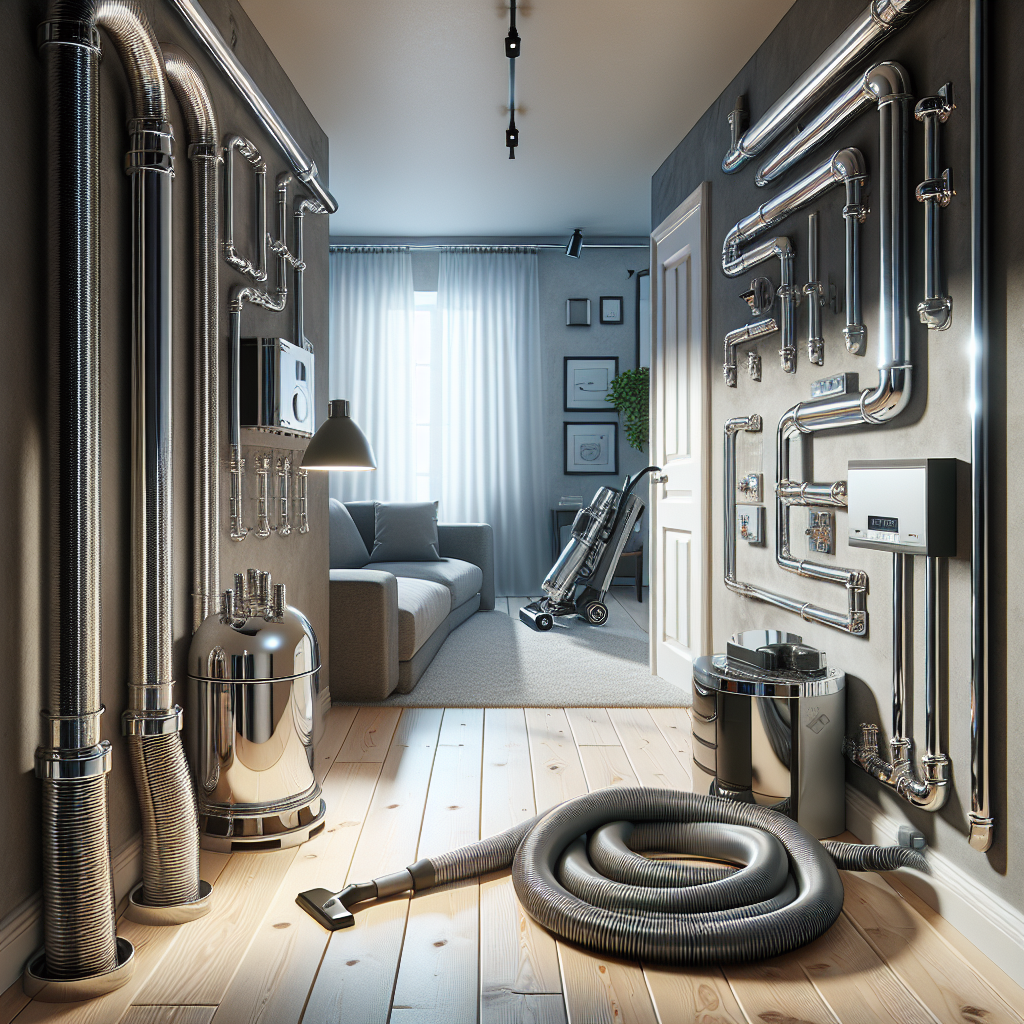
5 Key Benefits of Installing a Central Vacuum System in Your Home
Contemplating a central vacuum system for your home? Perfect! As we dive deeper into the perks of integrating this system, you’ll see why it’s not just an upgrade but a smart, long-term investment for any homeowner. Here’s a breakdown of the top five benefits that might just persuade you to make the switch!
1. Say Goodbye to Allergens and Dust
One of the standout benefits of a central vacuum system is its ability to improve the air quality within your home. Unlike traditional vacuums that can recirculate dust, a central vacuum system removes dirt, dust particles, and allergens completely from the indoor environment and vents them outside. This system is a boon for allergy sufferers and can profoundly impact the overall healthiness of your living space.
2. Unparalleled Convenience
Imagine no longer having to lug a heavy vacuum cleaner up and down the stairs or from room to room. With strategically positioned inlets throughout your house, a central vacuum system offers the ultimate ease of use. Just plug the lightweight hose into an inlet, and you’re ready to go. This feature is particularly beneficial for larger homes or for those with mobility issues. Plus, you’ll find that cleaning becomes less of a chore and more of a quick, almost effortless task.
3. Powerful and Deep Cleaning
The motor of a central vacuum system is typically more robust than that of a portable vacuum. This increased power translates to a better clean, as it can more effectively lift dirt and debris from carpets, upholstery, and other surfaces. The result is a deeper, more thorough cleaning, enhancing the lifespan of your carpets and ensuring your hard floors remain pristine.
4. Low Maintenance and High Durability
Central vacuum systems are not only built to offer superior cleaning capabilities but also designed to last. With fewer moving parts exposed to daily wear and tear, these systems often require less maintenance than their portable counterparts. Additionally, the main unit is typically located in a garage or basement, away from the main living areas, which helps in reducing the noise created during vacuuming—a subtle but significant benefit.
5. Increase in Home Resale Value
Installing a central vacuum system can be a smart financial move, too. It’s a feature that can boost your home’s resale value. When potential buyers see a home with a central vacuum system, they often view it as a higher-end amenity, similar to a spa-like bathroom or a gourmet kitchen. This perception can translate into a quicker sale and potentially a higher selling price, making it an investment that pays off down the line.
There you have it—five compelling reasons to consider a central vacuum system for your home. Not only does it promise a cleaner living environment, but it also adds convenience, efficiency, and value to your property. Perfect for any savvy homeowner looking to enhance their home’s functionality and worth!
How to Choose and Install the Right Central Vacuum System for Your Home
Thinking about upgrading to a central vacuum system? It’s a smart move! Not only does it make cleaning easier, but it can also improve indoor air quality and increase your home’s value. However, choosing the right system and ensuring proper installation can feel daunting. Don’t worry, though—we’ve got you covered with some expert tips that will make the process as smooth as a freshly vacuumed floor!
Understanding Your Home’s Needs
Before diving into the world of central vacuum systems, it’s crucial to assess your home’s specific needs. Here are a few things to consider:
- Size of Your Home: The size of your home will significantly influence the type of system you need. Larger homes may require systems with more power and extended reach to ensure adequate suction throughout.
- Flooring Types: Do you have carpet, hardwood, tile, or a mix? Different surfaces might require different types of vacuum heads and accessories.
- Layout and Design: Multiple floors and complex layouts might need strategically placed inlets to maximize the system’s efficiency.
- Existing Ventilation: Understanding how your home is ventilated is crucial as it can affect the installation process and the overall performance of the vacuum system.
Choosing the Right Central Vacuum System
Picking the perfect system goes beyond just power and brand. Here’s how to select a system that fits seamlessly into your life:
1. Assess the Power Unit
The power unit is the heart of any central vacuum system. Consider a unit with enough power to handle your home’s square footage. A general rule of thumb is choosing one with at least one Air Watt per square foot. For instance, a 2,000 square foot home should have a system with at least 2,000 Air Watts.
2. Consider Filtration Features
Central vacuums come with various filtration methods like bags, cyclonic separation, or filters. If you’re concerned about allergens, look for systems that offer HEPA filtration, which can trap even the smallest particles.
3. Evaluate the Installation Requirements
Some systems are easier to install than others. Consider whether you can DIY the installation or if you’ll need professional help. Also, check if the system’s requirements are compatible with your home’s current layout and infrastructure.
4. Plan for Inlets and Accessories
Ensure your system comes with enough inlets to cover all areas of your home effectively. Additionally, consider the types of accessories included with the system, such as different brushes and nozzles for various cleaning tasks.
Finding the Right Installation Service
While some intrepid DIYers might take on installing a central vacuum system themselves, most homeowners will benefit from professional installation. Here’s how to find the right service:
1. Search for Local Experts
Start by searching for local services that specialize in central vacuum systems. Use local directories like BuildNet to find well-reviewed and recommended professionals nearby.
2. Check Credentials and Reviews
Once you’ve found a few potential installers, check their credentials. Ensure they are licensed and insured, and read reviews to learn about other homeowners’ experiences.
3. Get Multiple Quotes
Don’t settle for the first estimate you get. Approach several services to get quotes. This will give you a better understanding of the costs involved and help you find the best deal.
4. Discuss Your Specific Needs
When you meet with installers, be clear about your home’s particular needs. The more information they have, the better suited their advice and the services they offer will be.
Ensure Proper Installation
An expertly installed central vacuum system can significantly enhance your cleaning routine. Here’s what to ensure during installation:
- Strategic Placement of Inlets: Inlets should be placed in locations that allow easy access and maximize coverage with minimal hose length.
- Sealed and Secure Piping: Ensure that all piping is securely connected and sealed to prevent air leaks, which can reduce the system’s efficiency.
- Test the System: After installation, do a thorough test of the system to check for any issues in suction or performance across different areas of the house.
Choosing and installing the right central vacuum system might initially seem like a lot of work, but with the right preparation and professional help, you can significantly enhance your home’s cleanliness and overall value. Remember, a well-chosen system tailored to your home’s specifics not only makes cleaning easier but also adds a modern touch to your household amenities.
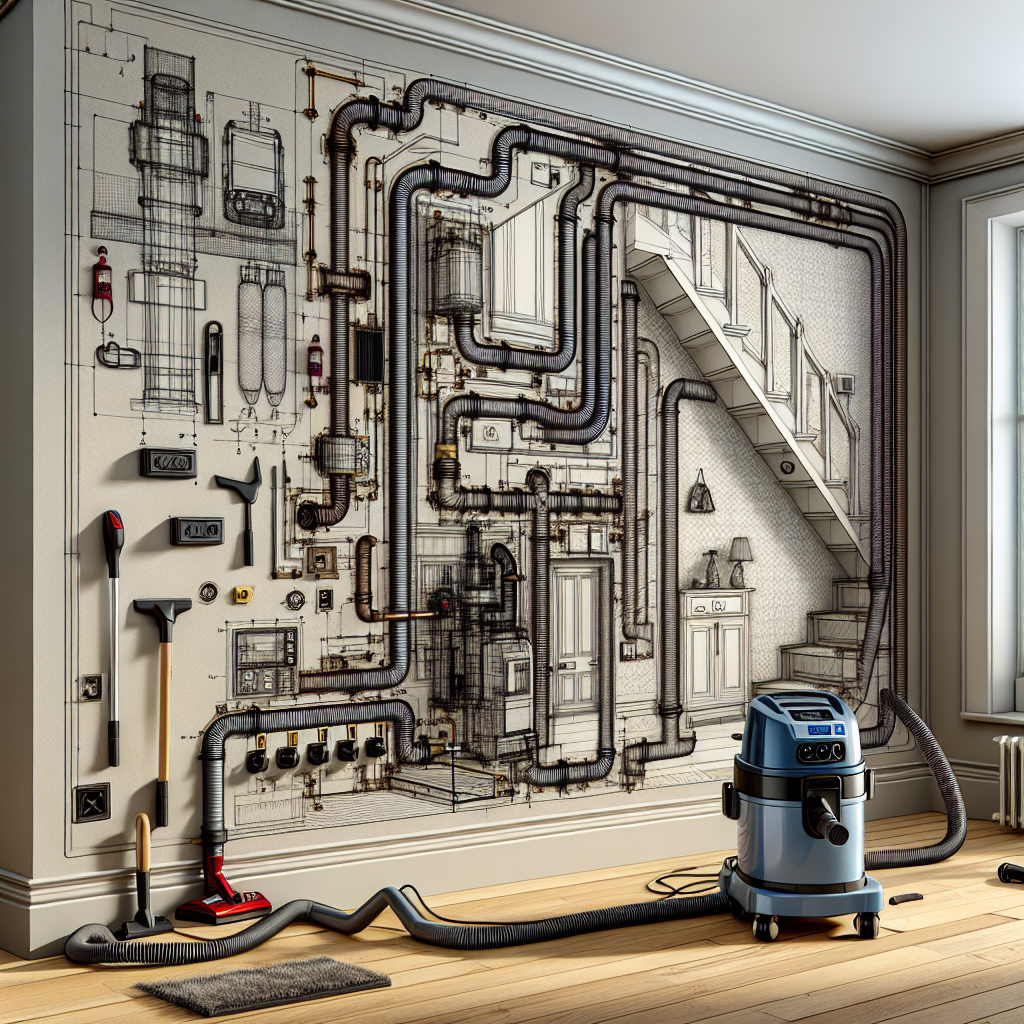
Frequently Asked Questions About Central Vacuum Systems
What is a central vacuum system?
A central vacuum system, also known as a built-in or ducted system, is a powerful, stationary vacuum cleaner that is installed within a home. It includes a motor and dirt collection unit located in a remote utility space and a network of piping connected to various vacuum inlets installed throughout the house. To clean, you simply attach a hose and cleaning attachment to an inlet and vacuum away.
How does a central vacuum system work?
When you plug the hose into an inlet, the central vacuum system’s motor activates, creating suction at the hose’s end. Debris and dirt are then pulled through the piping system to the central unit where they are collected in a canister or bag for easy disposal.
What are the benefits of installing a central vacuum system?
Central vacuum systems offer several advantages over traditional vacuum cleaners, including increased suction power, reduced noise levels, improved indoor air quality, and more convenience. They are also built to last, which can add to the overall value of your home.
Can a central vacuum system be installed in an existing home?
Yes, central vacuum systems can be retrofitted into existing homes as well as included in the plans of new constructions. The installation process will involve running PVC piping through walls, floors, or attics, and placing inlets strategically around the home.
What should I consider when choosing a central vacuum system?
Key factors include the size of your home, the system’s motor power, the type and quality of filtration it offers, and the variety of available accessories. It’s also important to consider the professional installation team’s experience to ensure efficient and correct setup.
Are central vacuum systems more expensive than regular vacuums?
Initially, central vacuum systems are more costly than standard portable vacuums due to the need for professional installation and materials. However, they often lead to long-term savings thanks to their durability and efficiency, not to mention the potential increase in home value.
How do I maintain a central vacuum system?
Maintenance typically involves emptying the dirt canister when it fills up, replacing or cleaning filters, and occasionally checking for clogs or blockages in the system. Most systems are designed for easy access to these components.
Where can I find a contractor to install a central vacuum system?
You can easily find qualified contractors through a trusted directory, such as BuildNet. They provide access to experienced professionals who can offer advice and free quotes tailored to your specific needs.
Conclusion
Central vacuum systems represent a significant upgrade from traditional portable vacuum cleaners, offering superior cleaning power, convenience, and efficiency. They can dramatically improve the cleanliness of your home and the quality of your indoor air, all while being whisper-quiet compared to standard units. If you’re planning a new construction or considering upgrades to your existing home, a central vacuum system is certainly worth considering. Not only does it add value to your property, but it also simplifies the cleaning process, making it less of a chore and more of a quick, easy activity.
Choosing the right system and ensuring it is correctly installed is crucial, which is why we recommend consulting with a professional. Visit the BuildNet website to connect with experienced contractors in your area who can provide you with a free quote and all the information you need to make an informed decision. Remember, investing in a central vacuum system not only enhances your living space but also supports your family’s health and well-being.

